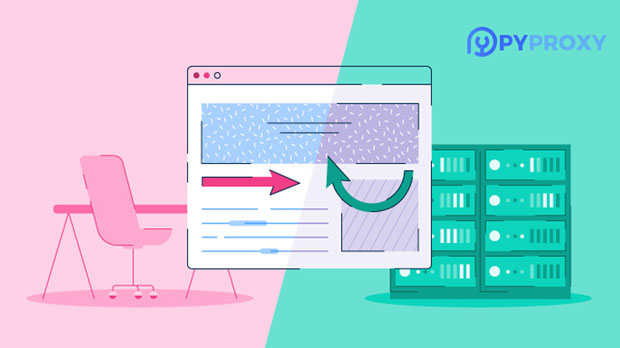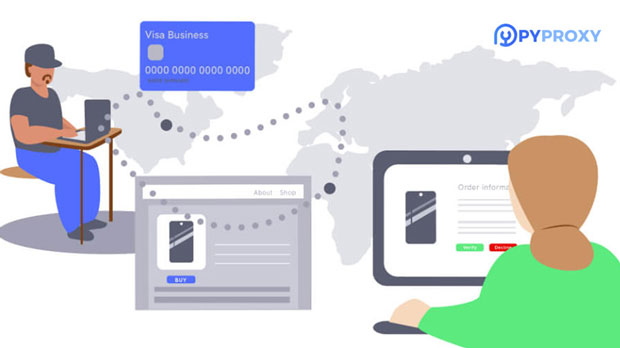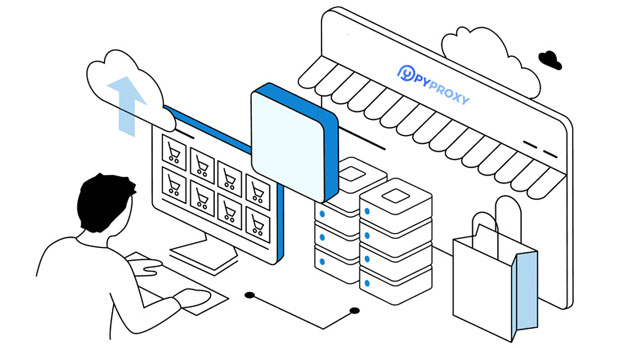In today's digital age, the need for proxy services is more prominent than ever. Whether for anonymous browsing, security, or bypassing geo-restrictions, proxies have become an essential tool for internet users. Among the various proxy types, Residential socks5 proxies have garnered attention due to their advantages. These proxies are primarily used for secure and anonymous browsing, but there are significant differences between free residential Socks5 proxies and paid services. Free proxies, while easily accessible, often come with limitations in terms of speed, reliability, and security. Paid services, on the other hand, offer enhanced performance, stability, and better privacy protection. This article explores the key differences between these two options, providing valuable insights for users to make an informed decision. Understanding Residential Socks5 ProxiesResidential Socks5 proxies are a type of proxy server that routes internet traffic through real residential IP addresses. Unlike datacenter proxies, which use IP addresses from data centers, residential proxies are assigned by Internet Service Providers (ISPs) to real homes. This makes residential Socks5 proxies appear as regular internet traffic, which can be crucial for tasks like web scraping, accessing geo-restricted content, or enhancing online security.Free Residential Socks5 ProxiesFree residential Socks5 proxies are often provided by individuals or platforms as a way to attract users. These proxies typically have low cost or no cost at all, making them an appealing option for users who need proxies for short-term or non-critical tasks.However, free proxies come with significant drawbacks. One of the main issues with free residential Socks5 proxies is their reliability. These proxies may experience frequent downtime or slow speeds due to their limited resources and high user demand. Since the proxy networks are often shared by many users, performance can be inconsistent.Security is another major concern with free proxies. Since many free proxies do not encrypt traffic or have inadequate security protocols, users can be vulnerable to cyber-attacks, data theft, or even malicious software. Privacy risks are also heightened, as free proxies might log user activity or even inject ads into the browsing experience.Additionally, free residential proxies are often limited in terms of geographical diversity. They may only offer a few IP addresses, all concentrated in the same region. This can be problematic if users require proxies from different locations for tasks like market research or ad verification across multiple countries.Paid Residential Socks5 ProxiesPaid residential Socks5 proxies, in contrast, offer a more stable and secure browsing experience. These proxies come with a dedicated IP pool, ensuring better performance and reliability. Since users pay for the service, they are usually granted access to high-quality proxies with better speed, fewer restrictions, and more consistent uptime.Security is a significant advantage when using paid residential Socks5 proxies. Providers of these services often invest in robust security measures, such as encryption, to protect users' data and privacy. Paid services are also more likely to provide transparent privacy policies and strict no-logs guarantees, ensuring that users' online activities are not tracked or recorded.Another key benefit of paid residential proxies is the geographical diversity they offer. Paid providers often give users access to proxies in multiple countries, making them ideal for tasks like international market research, SEO tracking, or bypassing regional restrictions. This broad range of locations provides users with more flexibility and greater anonymity online.Moreover, paid residential socks5 proxy services tend to offer better customer support. With a paid plan, users can expect prompt responses to issues, dedicated technical support, and assistance with troubleshooting. This can be invaluable for businesses or individuals who rely on proxies for critical operations.Speed and PerformanceSpeed and performance are two crucial factors that set free residential Socks5 proxies apart from paid ones. Free proxies are generally slower, as they are often overcrowded with users. Since multiple people are using the same proxy, bandwidth is shared, resulting in slower speeds and potentially longer response times. This can negatively impact tasks like streaming, gaming, or any activities requiring fast internet speeds.On the other hand, paid residential proxies are designed to handle higher traffic loads and provide faster speeds. These services ensure that bandwidth is allocated efficiently, giving users quicker access to websites and resources. Additionally, the reduced number of users per proxy allows for a smoother browsing experience without interruptions or lag.Reliability and UptimeReliability and uptime are often the most critical considerations when choosing a proxy service. Free residential Socks5 proxies are notorious for their unreliable nature. Due to the lack of infrastructure and maintenance, these proxies may frequently experience downtime. This is particularly problematic for users who need a stable and continuous connection for web scraping, data collection, or other business-related activities.Paid residential Socks5 proxies, in contrast, guarantee higher uptime and reliability. With proper infrastructure, ongoing maintenance, and quality control, paid services can offer users a stable connection, ensuring that tasks are completed without interruption. This makes them a more dependable choice for those who rely on proxies for critical activities.Cost and Value for MoneyThe most obvious difference between free and paid residential Socks5 proxies is the cost. Free proxies may seem like an attractive option, but they often come with hidden costs in terms of security risks, poor performance, and limited support. Users may find themselves struggling with slow speeds, downtime, and unreliable connections, leading to a frustrating experience.Paid services, while requiring a financial investment, offer better value for money. The enhanced security, performance, reliability, and support that paid proxies provide make them a more practical choice for long-term use. Businesses or individuals who need proxies for professional purposes can benefit from the peace of mind that comes with a high-quality service.ConclusionIn conclusion, the choice between free and paid residential Socks5 proxies depends on the user's needs. Free proxies may be suitable for casual, non-critical tasks, but they come with several limitations, including poor security, slow speeds, and unreliable performance. Paid residential Socks5 proxies, on the other hand, offer superior security, speed, and reliability, making them a better option for professional use or when high performance is crucial. Understanding the differences between these two options can help users make an informed decision based on their specific requirements.
Jan 14, 2025
![arrow]()



















































